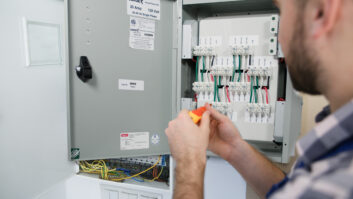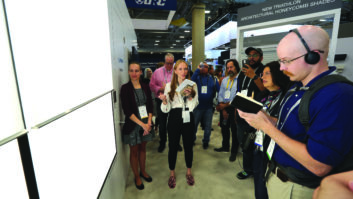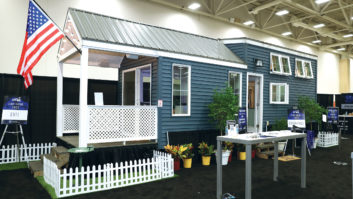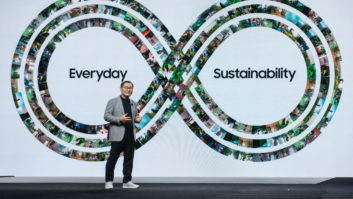We’ve been hearing about smart appliances for years. Future promises of streamlined cooking and cleaning go as far back as Disney’s Home Of Tomorrow exhibit in EPCOT or Buckminster Fuller’s Dymaxion House, which featured self-vacuuming carpets in the 1930s. For the most part, the custom installation (CI) channel has steered clear of the appliance world, leaving a murky gray area. Is 2019 the year where we’ll start to see convergence across the kitchen, laundry room, and the rest of the house?
Appliances have always presented a challenge for the CI market. Just because we can integrate them, does it mean we should? Many integration recipes have come and gone over the years, including Control4’s integration with Wolf ovens and Sub-Zero refrigerators, or overcomplicating the process of automatically brewing coffee each morning. In short, we haven’t seen a compelling appliance use case scenario where it made sense for CI professionals to take notice. But that’s starting to change.
New appliances are shipping with network connectivity, apps, and the promise of making life easier in the connected home. Some manufacturers such as Samsung and LG are even trying to push their worldview of the connected home well past the kitchen and into the living room. Since many of these same manufacturers make display products we’re already specifying and installing, it won’t be long before we start to see cross-pollination between the two rooms.
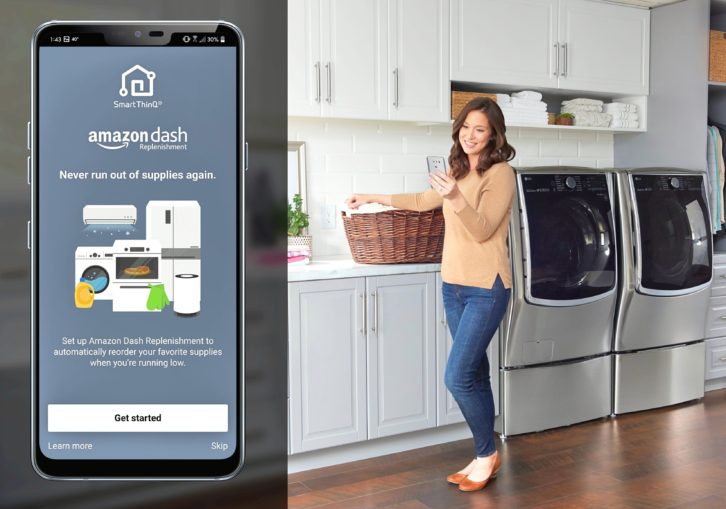
CI companies stand to benefit from the smart appliance wave in a few key areas: maintenance reminders, service requests, and performance data. On the service side, the next few years will see the availability of diagnostic and service alert data from appliances better informing consumers and creating a more proactive service experience.
Imagine understanding how your fridge is performing from a quantitative perspective, the same way you can pull data from your car using the diagnostic port (which companies like Automatic are using to help clients better understand their vehicles and manage teen drivers). The same promise holds true for appliances.
Service reminders, failed parts, and consumable replenishment are all great features that will require a single dashboard to be easily understood. Who better to weave them all together than the home technology professional? For the same reason the electrical channel is happy to hand over low-voltage AV work to the CI channel, the appliance businesses are sure to follow suit. Local appliance stores or even national chains like Best Buy won’t have much appetite for connecting client gear to networks and driving up their cost to serve. Network connectivity and simplification are the domain of the integrator. If you position your company today to better understand smart appliances and their features, you’ll be in good shape when the time comes to report on performance data, integrate maintenance reminders, and manage service requests down the road.
Related: Key Trends in the Smart Home
Maintenance & Replenishment Reminders
As our homes continue to evolve, we need look no further than the automobile to gain an understanding of where our appliances are heading. Issues with vehicles are reported to a single dashboard or app, enabling the driver to take action immediately. Because the vehicle is a closed system, the automaker controls this process. Since the home is far from closed and made up of disparate manufacturer products, it’s up to the home technology professional to provide the same simple dashboard experience to their clients.
Imagine being able to push timely notifications to clients about getting their dishwashers serviced, ordering more lettuce, or replacing a water filter. Current offerings are siloed in apps such as LG’s SmartThinQ or the Home Connect app. As more manufacturers start to open up their application programming interfaces (APIs), we’re sure to see a wave of dashboards hit the market touting a total understanding of the home. Who better to lead this charge than the CI channel?
The smart appliances category isn’t rigidly defined, but tends to begin with the usual suspects: refrigerators, laundry, HVAC, cooking, dishwashers, and vacuums. We’ll dive into each category to explore the key players, features, and integration opportunities.
Service Requests
If you need service on your appliance today, it often includes several phone calls, searching for part numbers that get recorded improperly, and visits from technicians who may or may not do the job in one visit.
Imagine a world where the refrigerator notices that the ice maker stops working, sends a text alert to the client, and, based on their preferences, notifies a local service provider to fix the problem. Sound far off? Based on current efforts by manufacturers to add intelligence to their appliances, we’re closer than ever before to a world where service visits are able to be more proactive.
Related: The Smart Home Revolution
Performance Data
Is your HVAC system running properly? How do you know? Manufacturers across the appliance world have been reluctant to share their APIs. Why? Maybe they fear systems may not be performing to their rated standard or may yield more questions than answers. Just like Equifax and TRW eventually had to give consumers access to their credit scores, the appliance manufacturers will eventually begin reporting performance data driven by consumer demand. By integrating these data into the home dashboard, customers will have more information at their fingertips than ever before while enabling service providers to be more proactive in their support efforts.
Laundry
Smart washer and dryer combinations are nothing new, and apps like LG’s SmartThinQ enable remote control over both units as well as alerts when cycles complete. Down the road, look for service and maintenance reminders delivered over the network to the homeowner.
Key Players, Features & Integrations:
- Samsung: Smart Home app enables scheduling of cycle times, visibility into remaining time, and maintenance reminders.
- LG: SmartThinQ app enables remote control and live laundry cycle notifications.
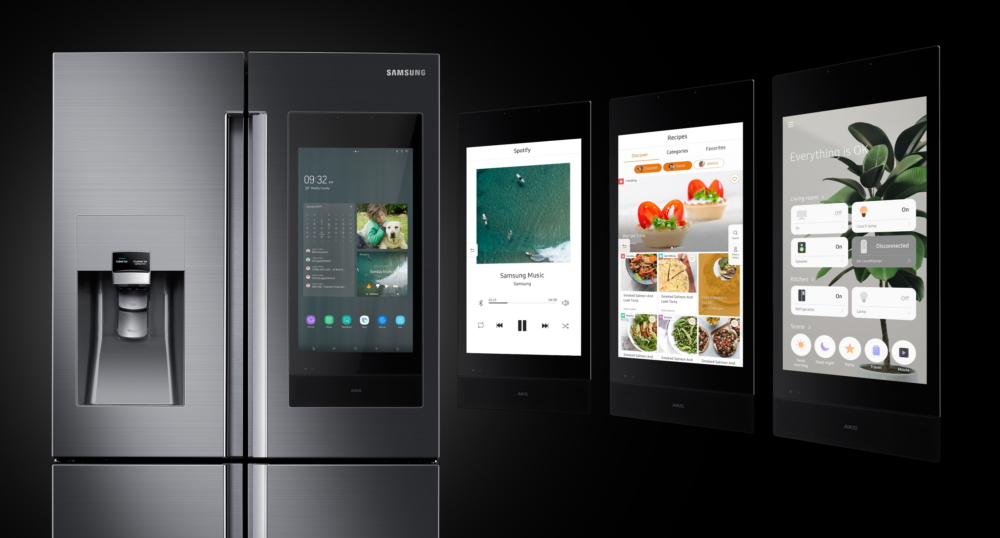
Refrigerators
Smart refrigerators have always captured our imaginations with the promise of ordering milk, eggs, and other staples automatically as they get short on supply. We’re closer than ever to that reality as new products from LG and Samsung promise to do just that.
Key Players & Features:
- LG: SmartThinQ door left open notification; refrigerator inventory on select models with automatic replenishment of low supplies. Alexa built into Smart InstaView refrigerator door.
- GE: Geneva Alexa skill allows hands-free coffee brewing through a built-in Keurig by saying, “Alexa, ask Geneva to heat water for coffee.”
- Samsung: The Family Hub refrigerator features a 21.5-inch touchsceeen with simple apps and a camera view of the interior. Drag-and-drop expiration trackers help keep track of perishables.
HVAC
Thanks to the smart thermostat, HVAC is one area of the home where the CI channel has become ubiquitous. Whether it’s a Nest, Ecobee, or other thermostat, we know more about customer HVAC than ever before. We’re still woefully underpowered when it comes to true automation. Most of the thermostat solutions on the market have to be programmed by hand vs. automatically adjusting themselves. This has to change in order for the category to escape the 1980s phenomenon of an America that never learned to program its VCR.
Key Players & Features:
- Nest: Auto-away feature senses when homeowners are away and adjusts temperature automatically.
- Ecobee: Remote temperature sensors enable averaging hot and cold spots together, enabling better heating/cooling.
- Aprilaire: The CI channel uses Aprilaire to integrate with traditional control systems such as Control4, Crestron, and many others. Most control systems rely on installers or homeowners to program their own heating and cooling schedules.
- Alarm.com: The Smart Thermostat uses remote temperature modules and sensor data around the home to dynamically create heating and cooling schedules.
Stoves, Ovens, and Microwaves
This category has struggled to deliver meaningful smart functionality. Enabling the control of stoves and ovens remotely comes with risk factors (especially surrounding fire). Companies such as Sidechef are trying to bring forward ideas like sending preheating and cook time instructions to smart ovens.
Key Players & Features:
- LG: Monitor temperature/preheat settings via LG SmartThinQ app.
- Whirlpool: Smart Oven learns and adapts based on your cooking activity, delivering suggestions over time based on prior usage.
- GE: Geneva Alexa skill allows hands-free oven preheating through requests like, “Alexa, ask Geneva to preheat the oven to 350.”
Vacuum Cleaners
We’ve come a long way since the introduction of the first Roomba over a decade ago. Today’s smart vacuum cleaners clean randomly or methodically depending on model and feature onboard cameras, floor plan mapping, smart object detection, and longer battery life than ever before (60+ minutes on most models).
Key Players & Features:
- iRobot Roomba: New models include an onboard camera, smartphone app, and much longer battery life than previous generations. Their new i7 model empties itself into a base station that can hold up to 30 robot bins.
Dishwashers
If you think about it, the dishwasher is one of the original “smart” appliances, completely revolutionizing the loathsome task of scrubbing plates by hand. No matter how many apps or integrations manufacturers offer, it’s all for naught if the result isn’t sparkling glass and silverware.
Key Players & Features:
- Bosch: Home Connect technicians can remotely access and diagnose appliance issues with customer permission.
- Thermador: Another Home Connect partner offering remote control over dishwashing cycles, scheduling, and remote support upon request.
- Cove: Notifications include wash cycle begin and end, door left open, and alerts to replace rinse aid or water softener when low levels are reached.
Threats
Samsung and LG have made big pushes into the home over the last decade and expect to see their appliance ecosystem closed off to open integration for some time to come. CI professionals who don’t understand how smart appliances fit into the larger technology conversation will be left behind as the kitchen gets smarter and smarter. Expect to see manufacturers pushing hard to bring together their TVs, smart speakers, touch displays, and other smart objects in an effort to further solidify their dominance in the home. This may affect control system sales by delivering a “good enough” solution for many consumers. In addition, appliance apps like Home Connect may produce a fragmented technology support experience for clients where the integrator has little to no control.
Opportunities
Home technology professionals have a leg up on appliance shops and big box stores by leveraging their local presence and relationships already established with homeowners. By managing the home technology experience and helping facilitate service requests, maintenance and replenishment reminders, and curating performance data, integrators will be in a great position to capitalize on smart appliance trends in the coming years by monetizing their service offerings through platforms like OneVision and Parasol [the author is a co-founder of Parasol].
While 2019 may not be the breakout year where smart appliances and CI come together, early signs indicate that preparing your business for the coming data wave across the kitchen and laundry room will stand you in good stead as the category begins to mature.
Want more stories like this delivered to your inbox every day? Then sign up for the free Residential Systems eNewsletter here.


